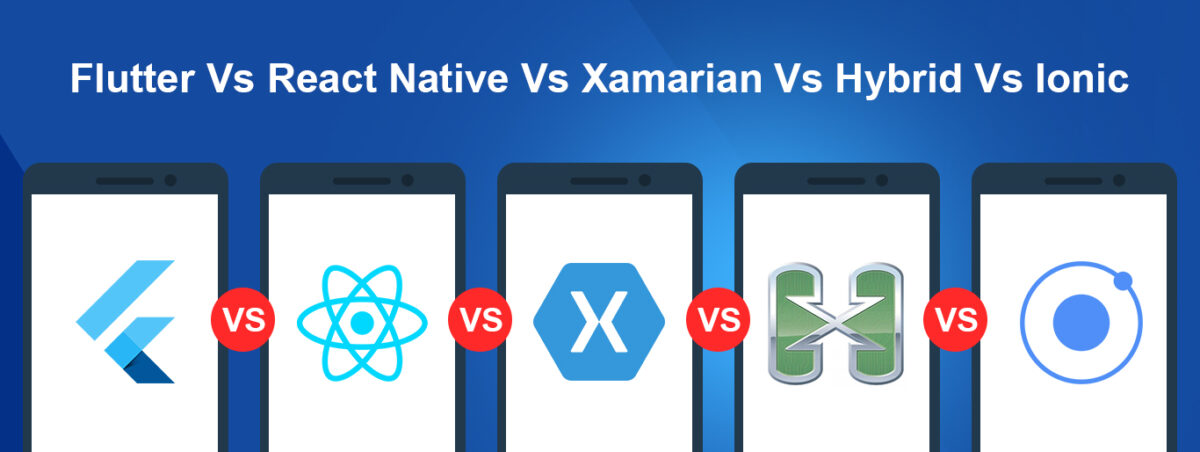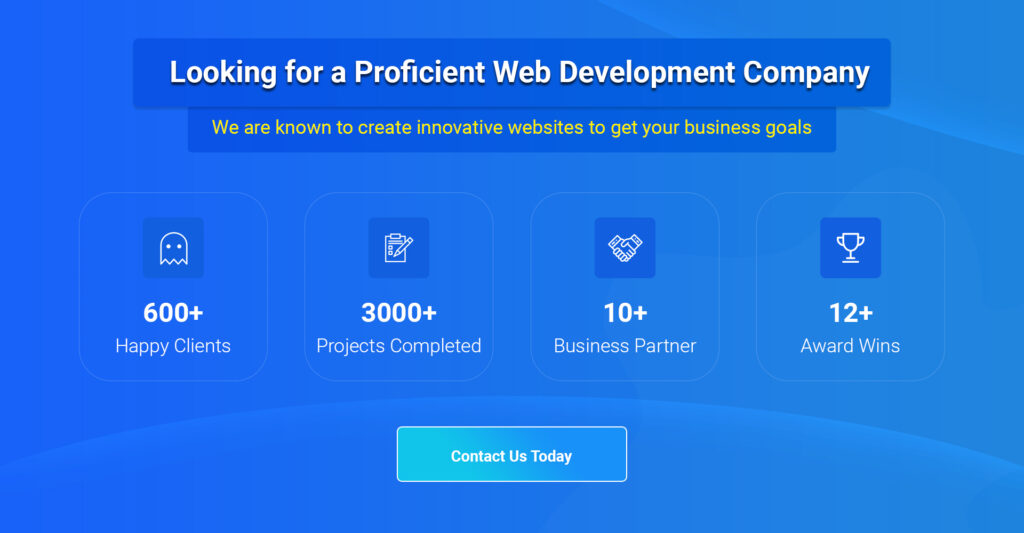There has been a change in outlook in actualizing legitimate business procedures. Most endeavors are changing from work area sites to mobile applications, which is the most optimized plan of attack section to contact the focused on crowds. Be that as it may, the mobile application industry is likewise experiencing one of the most competitive phrases where the determination of the correct framework alongside an able stage and advancement procedure ends up vital. So, the following are the frameworks of mobile app development. Let’s start with some points of Flutter Vs React Native Vs Xamarian Vs Hybrid Vs Ionic.
Basically, in this article, we are going to discuss the different frameworks used by different mobile app development company India and how they are different from each other.
Let’s have a look…
Table of Contents
Flutter Vs React Native Vs Xamarian Vs Hybrid Vs Ionic
1.Flutter – Dart
Flutter uses Dart programming language which was presented by Google in 2011 and is once in a while utilized by designers. Dart syntax is straightforward for JavaScript or Java engineers as it underpins the majority of the article arranged ideas. It’s anything but difficult, to begin with, Dart as there is extraordinary and simple to pursue.
2.React Native
React Native uses JavaScript, right now, one of the most prevalent elevated levels, powerful programming dialects. The quantity of engineers utilizing JavaScript in their work is 69.8 percent as indicated by the most recent Stack Overflow study. This implies finding a developer for your application will be simple enough.
So, these are the two basic frameworks of mobile app development and the following is the comparison between the two of them.
Also Read: Guide to Best React Native App Development Solutions
Flutter vs React Native
Reusable Code
Flutter – It allows code overwriting. You can easily recycle your code using flutter as it is the best option for re-usability.
React Native – It allows to reuse of the code but is restricted to a few basic components. For platform styling, it takes a lot of time.
Popularity & Coverage
Flutter –It is trending in the industry with 30K Github stars.
React Native –It is most popular among the developers among 65K Github stars.
Third-Party Libraries
Flutter –Numerous third-party packages are available and the framework discussions are very effective.
React Native –It is a popular framework and has more third-party packages that enhance the usability of the app.
After, the comparison of Flutter and React Native comes the Xamarian, Hybrid, and Ionic. So, first of all, we are discussing the Xamarian and native frameworks and the difference between both of them.
Xamarin
It utilizes C#, a statically composed language, and the .NET system for every versatile stage. Anything that can be accomplished with Objective-C, Swift, or Java, an engineer can do in C# utilizing Xamarin.
Hybrid
This is a cross-stage mobile application development that supports OS like iOS, Android, or Windows. They can be created by utilizing HTML5, JavaScript, and Cordova to get to mobile local highlights. They can be sent to an alternate stage by structure them stage explicit SDKs, upheld by a specific mobile OS. You can likewise utilize the half and half versatile applications improvement system like Ionic, Intel XDK, Sencha, Kendo UI, PhoneGap, and so on.
Here’s the difference between them…
Xamarin vs Hybrid
Tech Stack
Xamarian – One tack stack with a single code base, i.e. C# Net framework + native libraries.
Hybrid – One tech stack, single codebase i.e. JavaScript, HTML5, CSS.
Code Sharing
Xamarian – Up to 96% using Xamarin.Forms
Hybrid – Up to 100%
UI/UX
Xamarian – Complete Ul customization is possible for every platform using Xamarin IOS & Xamarian Android.
Hybrid – Common Ul for every platform and is limited to customization capabilities.
Hardware Capabilities
Xamarian – It is high & uses only platform-specific APIs, and also supports linking with native libraries.
Hybrid – It is medium and can be accessed through third-party apps and plugins. Due to its poor quality, there are some risks and unreliability of most of these tools.
Time to Market
Xamarian – In the Xamarian framework, the time to market is fast just because there are limited customization and extensive code sharing. IOS and Xamarian. The android requires slightly more time as the number of custom codes increases.
Hybrid – The hybrid solutions offer the fastest time to market and all thanks go to the single code base and minimum customization. These tools are very useful for prototyping and proof of concept projects.
At last, comes the Ionic framework. Now, we are doing to discuss what the ionic framework is and how it is different from the Xamarian.
Also Read: What is the Cost to Develop a Hybrid vs. Native Mobile App?
Ionic
The Ionic structure uses web innovations like HTML5, CSS, and JavaScript to compose and run applications, and requires a Cordova wrapper to get to local stage controllers. The Ionic center is composed of Sass and was initially founded on a famous JavaScript system – AngularJS.
The difference between Xamarian and Ionic framework…
Xamarin vs Ionic
Purpose
Xamarian – Cross-platform
Ionic- Hybrid
Language Stack
Xamarian – C#
Ionic – Web technologies using HTML, CSS, and JavaScript
Code Reusability
Xamarian – No platform-specific code reusability.
Ionic – Optimum scope of code reusability.
Performance
Xamarian – Optimum performance and is quite close to the native framework.
Ionic- Slower than the Xamarian framework due to the use of Webview.
Also Read: 5 Latest React Native App Ideas to Use in 2021 & Beyond
Testing
Xamarian – The advanced tooling option makes the testing process much easier.
Ionic – Code can be tested using any of the browsers.
Community & Support
Xamarian – Strong & stable
Ionic – Strong & stable
GitHub Stars
Xamarian – 34k
Ionic – 66K
Conclusion…
The systems are the most significant driving devices for the structure of any mobile or web application. It must be recalled that each venture or application has an alternate prerequisite thus the decision of the framework must be made cautiously and after discovering the other basic variables. Realizing the correct framework to pick relies upon various things. On the off chance that you mean building up a game or an application requiring a great deal of gadget explicit capacities, going local is most likely the best for you. Be that as it may if your mobile application will be a moderately basic one, going cross-stage is the better choice as it sets aside your time and cash. The year 2019 will see the rise of numerous mainstream structures however these will top the need rundown of the engineers.
Now that you know about each framework and the difference between reach of them, so the decision is all yours which one to go ahead with. Hope we cleared all your queries regarding Flutter Vs React Native Vs Xamarian Vs Hybrid Vs Ionic. For more queries, you can get in touch with the experts of mobile app development company India.
Thanks for reading our post “Flutter Vs React Native Vs Xamarian Vs Hybrid Vs Ionic!”, please connect with us for any further inquiries. We are Next Big Technology, a leading web & Mobile Application Development Company. We build high-quality applications to full fill all your business needs.























